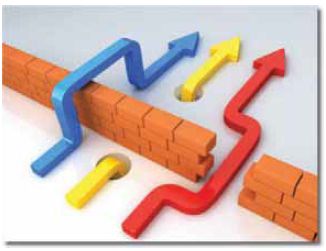Nursing - Barriers to Effective Communication | 11th Nursing : Chapter 4 : Nursing - Communication Skill in Nursing
Chapter: 11th Nursing : Chapter 4 : Nursing - Communication Skill in Nursing
Barriers to Effective Communication
Barriers to Effective Communication
Barriers to effective
communication can retard or distort the message or intention of the message
being conveyed. This may result in failure of the communication process or
cause an effect that is undesirable.

·
Physical barriers - Physical barriers are often due to the nature of the environment like noise,
invisibility, etc.
·
Organisational barriers - It refers to problems with the structures or systems in place in an
organization. Eg., a lack of supervision or training or policy
·
Personal barriers
- It is due to psychological problems
of individuals. Eg., lack of motivation or dissatisfaction at work or
inattentive
·
Ambiguity of words/phrases - Words sounding the same but having different meaning can
convey a different meaning altogether. Hence the
communicator must ensure that the receiver receives the same meaning.
·
Individual linguistic ability - The use of jargon, difficult or inappropriate words in communication can
prevent the recipients from understanding the message.
·
Physiological barriers - These may result from individuals’ personal discomfort, caused by ill
health, poor eyesight or hearing difficulties.
·
Bypassing - This happens when the communicators (sender and the receiver) do not attach the
same symbolic meanings to their words.
·
Cultural barriers - Strong beliefs, customs, attitudes, religious, sentiments, illiteracy may
influence communication.
·
Fear of being criticized - This is a major factor that prevents good communication.
·
Gender barriers - Most communicators whether aware or not, often have a set agenda.
This is very notable among the different genders.
Measures to Overcome the Barriers of Communication

Clarify the idea – The communicator must be clear about
what he wants to communicate
Completeness of the message – The message should be
relevant to the nature and purpose of communication
Understand the receiver – The communicator should be
aware of the total physical and human setting
Use appropriate channels – The channels should be appropriate
to the message
Consistency in communication – The message should be
consistent with objective
Feedback – It involves effective participation and
improves mutual understanding
Simplifiedstructure–Thecommunication can be strengthened by
simple procedure and regulating the information flow
Improve listening – The sender and receiver must listen
with attention, patience and empathy
Mutual trust and confidence – It improves the effectiveness of
communication
Related Topics